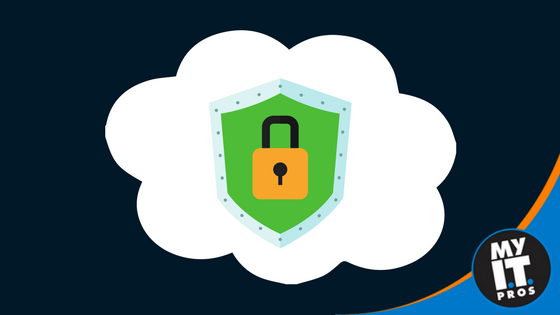
There are two sides to every coin, and nowhere is that more evident than on your cloud server. The exact same attributes that make cloud storage servers so cost-effective and convenient also make them much more difficult to secure.
In the cloud, maintenance and upgrade management falls entirely to your cloud hosting provider. On one hand, this frees up internal resources, meaning less time (and money) is spent on routine maintenance. On the other hand, you don’t have control over server configurations and upgrades, which could spell trouble where your business security is concerned.
Similarly, the same virtualization technology that allows you to rapidly deploy new cloud servers also puts you at risk for data breaches and other cybercriminal events. In cloud computing, physical servers are split into virtual machines, which means other organizations could theoretically access the data stored on them—especially if your provider is lax with security controls.
These issues highlight just how diligently business IT support teams must work to secure cloud storage servers and databases. Beating hackers at their own game requires robust, thorough security strategies like those described below.
End-to-end data encryption
Implementing encryption solutions is one of the most crucial moves you can make to protect your data from leaks and ransomware attacks. Most cloud storage services automatically encrypt data while in transit; however, once that data is saved to your cloud server, there’s no guarantee that it’s secure. And even if a third-party cloud storage service does encrypt the data stored on its servers, the company ultimately holds the key to that information, not you. In other words, if that third party is compromised, your data could go down with it.
These facts make a good case for implementing some kind of encryption method before you store data in the cloud, but regardless of whether you use a cloud storage service or have a separate cloud environment, protecting your data with encryption software offers security against brute-force attacks, data leaks and ransomware. Your business IT support provider should be able to help you design an encryption technique for your cloud storage solutions—for instance, at MyITpros, we offer whole-disk encryption for our cloud services.
Secure data transfers
Keep in mind that data is not only at risk when it’s sitting on cloud storage servers, it’s also vulnerable when in transit (i.e. while being uploaded, downloaded or moved on your server). Although most cloud service providers encrypt data transfers as a rule, this is not always a given.
To ensure data is protected while on the move, make certain that transfers go through secure HTTP access and are encrypted using SSL. Your business IT support provider should be able to help you obtain an SSL certificate and configure your cloud service to use it. You may also want to install HTTPS Everywhere on all devices that connect to your cloud.
Local data backups
The cloud often lulls business owners into a false sense of security where data integrity is concerned. After all, if one of the main cloud benefits is that your data is backed up automatically, there’s no need to save it locally, right?
Not necessarily. Hackers know that many businesses don’t save data locally, and they exploit this to their advantage when they launch ransomware attacks. Without local backups, you might feel pressure to surrender large sums of money to get your data back.
However, the FBI recommends that you don’t pay ransoms. Not only is there no guarantee that hackers will play fair and return your data (these are criminals, after all), paying up could brand you as an easy target and make you more likely to be hacked in the future. Backing up your data locally will give you the confidence you need to refute a ransomer’s fee.
Distributed denial-of-service protections
You may already be familiar with distributed denial-of-service (DDoS) attacks in which a hacker drowns your server, website or application with multiple requests for data, essentially rendering it useless. Cybercriminals have been launching denial-of-service attacks for at least 20 years, but today’s access to bots and IoT devices makes it even easier for hackers to coordinate the attacks through multiple systems, hence the term “distributed.”
You can fight back by building multi-layered protections into your networks and systems. Using web application firewalls, intrusion protection systems (IPS), load balancers and other tools, you’ll be able to better detect and prevent DDoS attacks and handle high-volume requests that might otherwise paralyze your network. A good managed service provider will be intimately familiar with these controls and able to add them to your infrastructure and servers.
Vulnerability assessments
Hackers are constantly at work, which means your IT support provider must be, too. To keep your company’s data, applications, websites and networks secure, you’ll need to stay one step ahead of cybercriminals.
Essentially, this boils down to identifying system weaknesses before they cost you. You may want to engage your business IT support team in performing a vulnerability assessment, which will involve your provider testing your cloud storage networks to locate weaknesses that may allow hackers in and then developing a plan to address these. Performing these assessments regularly keeps your networks like a shark: always swimming.
Access management
An unfortunate truth about security threats is that they don’t necessarily come from outside a business. Internal team members with access to sensitive data on the cloud can wreak havoc in their own right, whether they take the form of disgruntled employees stealing confidential data for malicious purposes or negligent personnel accidentally exposing information housed in the cloud.
Role-based access controls (RBACs) help you regulate the access given to various employees, allowing you to designate which servers and files individual users can open, edit or copy. Administrators can assign roles and privileges to users based on need, authority and the employee’s position within the company. Implementing these controls may also be required to stay compliant with statutory and regulatory requirements for your industry.
So what if there are two sides to the cloud computing coin? With the right cloud security controls, the odds will be in your favor every time!



